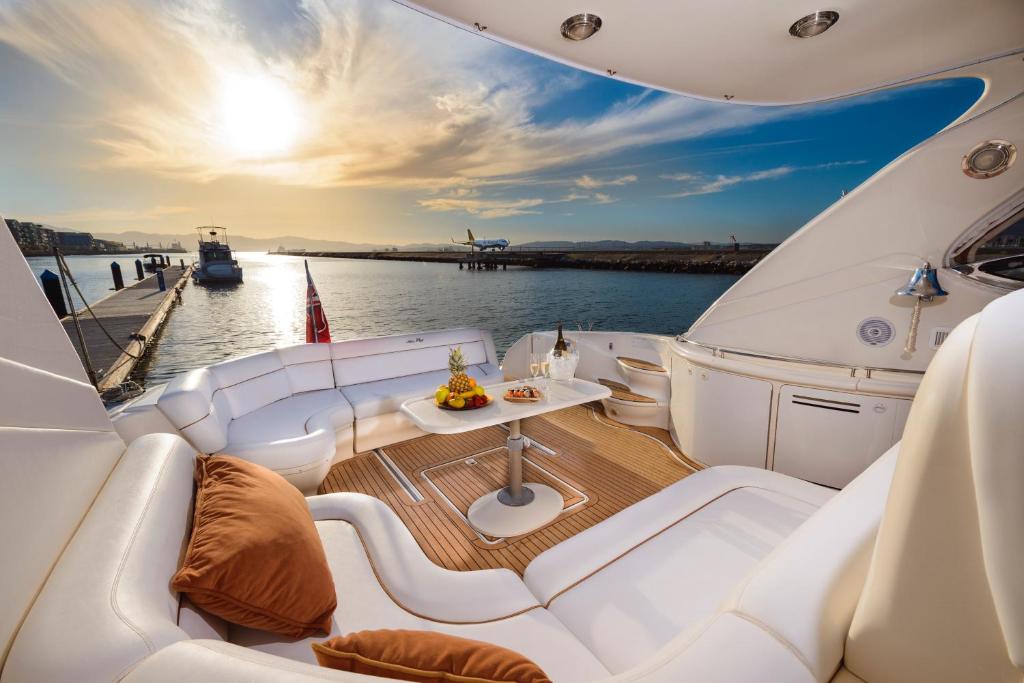The luxury industry, encompassing a wide range of sectors including fashion, jewelry, automobiles, and hospitality, has long been a dynamic and influential part of the global economy. A perspective-changing analysis involves looking at this industry from various angles, considering both traditional views and modern shifts in consumer behavior, technology, and global economic trends. Here’s an in-depth look:
Traditional Viewpoint
Historically, the luxury industry has been defined by exclusivity, high quality, and high price points. The traditional business model focused on producing exceptional products and offering them to a niche market of affluent consumers. This model emphasized the importance of heritage, craftsmanship, and the unique story behind each luxury brand. It thrived on scarcity and the idea that not everyone could afford or access luxury goods, thereby creating a high-level status symbol.
Modern Shifts in Consumer Behavior
The advent of digital technology and social media has significantly altered consumer behavior and expectations within the luxury sector. Today’s consumers are more informed, connected, and socially conscious. They demand not only exceptional quality but also sustainability, ethical production, and brand authenticity. The rise of the experiential luxury market, where consumers prefer memorable experiences over tangible products, reflects a significant shift in what is considered valuable.
Impact of Technology
Technology has transformed the luxury industry from production to customer engagement. The use of augmented reality (AR), virtual reality (VR), and artificial intelligence (AI) in offering personalized experiences has become more prevalent. Moreover, e-commerce platforms and social media have made luxury goods more accessible to a broader audience, challenging the industry’s traditional exclusivity but also opening up new markets and opportunities for growth.
Digital Transformation and Innovation
E-commerce and Digital Presence
Traditional View: The luxury shopping experience was predominantly in-store, with a focus on physical retail spaces. New Perspective: Luxury consumers are increasingly embracing online platforms for both discovery and purchase, leading to significant investments in e-commerce, virtual showrooms, and digital storytelling by luxury brands.
Leveraging Technology for Personalization
Traditional View: Personalization in luxury was limited to bespoke tailoring and made-to-order services. New Perspective: Advanced data analytics and AI are enabling hyper-personalized experiences at scale, from customized product recommendations to personalized digital marketing, enhancing the luxury experience in a more intimate and sophisticated manner.
Global Economic Trends
The luxury industry is increasingly influenced by global economic trends, including the rise of affluent consumers in emerging markets such as China, India, and the Middle East. This shift has led luxury brands to adapt their strategies to meet the tastes and preferences of these new markets, often blending global brand identities with local culture and traditions.
Global Market Dynamics
Western Market Dominance
Traditional View: The luxury market was historically dominated by Western consumers, particularly in Europe and North America. New Perspective: Emerging markets, especially in Asia, are becoming pivotal to the luxury industry’s growth. The rising affluent class in regions like China, India, and Southeast Asia is reshaping market strategies, with luxury brands tailoring their offerings and marketing approaches to cater to these diverse consumer bases.
Sustainability and social Responsibility
There’s a growing emphasis on sustainability and social responsibility within the luxury sector. Consumers are increasingly evaluating brands based on their environmental impact and ethical practices. This perspective shift is pushing luxury brands to adopt sustainable materials, reduce their carbon footprint, and engage in fair labor practices. Transparency and corporate social responsibility have become critical components of brand value.
Artisanal and Niche Luxury
Mass Luxury Appeal
Traditional View: The focus was on widely recognized luxury brands with mass appeal and extensive global reach. New Perspective: There’s a rising interest in niche, artisanal luxury brands that offer unique stories, exceptional craftsmanship, and limited-edition products. This shift highlights a growing appreciation for individuality, heritage, and authenticity in luxury consumption.
Reassessing Consumer Values
Experience Over Possession
Traditional View: Luxury was synonymous with exclusivity and ownership of high-end products. New Perspective: Modern luxury consumers increasingly value experiences and personal growth over mere possession of luxury items. Experiential luxury, such as travel, gourmet dining, and bespoke experiences, is gaining prominence.
Conscious Consumption
Traditional View: Luxury consumption was largely driven by status and outward displays of wealth. New Perspective: There’s a growing trend of conscious consumption within the luxury market, where consumers are more mindful of the ethical and environmental implications of their purchases. Luxury brands that champion sustainability, craftsmanship, and ethical practices are gaining favor.
The Psychology of Luxury Consumption
Stakes: Understanding the psychological drivers behind luxury purchases is crucial for luxury brands to craft compelling narratives that resonate with their target audience. This goes beyond mere status symbols to encompass personal achievements, self-expression, and the desire for exclusivity.
Strategic Impact: Brands that successfully tap into these psychological motivators can foster deeper emotional connections with their consumers, encouraging loyalty and repeat purchases. Marketing campaigns and product designs that reflect these underlying desires can significantly enhance a brand’s appeal.
Pros and Cons: A strategy that leverages psychological insights can lead to highly effective and targeted branding. However, it risks alienating potential customers if perceived as manipulative or if it fails to align with changing consumer values, such as the growing emphasis on sustainability and authenticity.
Future Scenarios: As consumers become more informed and critical, luxury brands might need to evolve their strategies to focus on genuine storytelling, authentic experiences, and values-driven messaging to maintain relevance and appeal.
Sustainability in Luxury Fashion
Stakes: The luxury fashion sector faces increasing pressure to adopt sustainable practices, driven by environmental concerns and consumer demand for ethical production. The challenge lies in reconciling the traditional luxury model, often based on exclusivity and opulence, with sustainable principles.
Strategic Impact: Embracing sustainability can open new market opportunities and strengthen brand reputation, appealing to a growing segment of environmentally conscious consumers. It also encourages innovation in materials and processes, potentially reducing long-term costs and environmental impacts.
Pros and Cons: Sustainable practices can significantly enhance a brand’s image and customer base. However, they may involve substantial upfront investments and complex supply chain adjustments. There’s also the risk of greenwashing accusations if brands fail to implement genuine, impactful changes.
Future Scenarios: The future could see luxury brands leading the way in sustainable fashion, driving industry-wide changes and setting new standards for environmental responsibility. Alternatively, slow adopters might find themselves struggling to keep up with changing consumer preferences and regulatory requirements.
Luxury Brand Collaborations and Co-Branding
Stakes: Collaborations between luxury brands and artists, designers, or even non-luxury brands have become a dynamic tool for innovation and market expansion. These partnerships can refresh brand images, attract new audiences, and create buzz around limited-edition products.
Strategic Impact: Successful collaborations can significantly boost brand visibility and appeal, introducing luxury brands to new demographics and reinvigorating interest among existing customers. They also provide an opportunity for creative experimentation and cross-industry learning.
Pros and Cons: When well-executed, collaborations can lead to highly coveted products and positive brand association. However, mismatches in brand values or audience expectations can dilute brand equity or confuse consumers. The exclusivity of luxury brands might also be at risk if collaborations are perceived as too commercial or mainstream.
Future Scenarios: We might see an increase in cross-industry collaborations, with luxury brands partnering with tech companies, artists, and even environmental organizations to create innovative and meaningful products. Alternatively, an oversaturation of collaborations could lead to consumer fatigue, pushing brands to find new strategies for engagement and differentiation.
These deeper explorations into specific subjects within the luxury industry reveal the complex interplay of consumer expectations, market dynamics, and strategic decision-making. As the industry continues to evolve, luxury brands will need to navigate these challenges with agility and foresight, constantly adapting to remain at the forefront of luxury and exclusivity.
Conclusion
The luxury industry is at a pivotal point, balancing between maintaining its traditional values of quality, exclusivity, and heritage, while adapting to the rapid changes in technology, consumer behavior, and global socio-economic trends. The future of the industry will likely depend on its ability to innovate sustainably, embrace inclusivity without losing its luxury appeal, and engage with a new generation of consumers who value experiences and ethics as much as they value the luxury goods themselves.
Examples of strategies and tactics for luxury brands
Chanel: Reinventing Heritage
Growth Strategy: Chanel, with its iconic status in the luxury fashion world, could focus on blending its rich heritage with modern sustainability initiatives to appeal to environmentally conscious consumers without losing its classic appeal.
Tactics:
- Chanel Green: Launch a “Chanel Green” line, using sustainable materials and processes, while maintaining the brand’s high-quality standards. This initiative can be highlighted in a global marketing campaign featuring brand ambassadors committed to environmental causes.
- Artisanal Collaboration Series: Introduce a series of collaborations with renowned artisans from around the world, creating limited-edition pieces that showcase traditional crafts through a Chanel lens, thereby supporting global artisan communities.
Expansion Strategy: Expand the brand’s digital presence in key Asian markets, offering exclusive online content and e-commerce experiences that retain the luxury feel of Chanel.
Tactics:
- Virtual Flagship Stores: Develop immersive virtual flagship stores for the Asian market, allowing customers to experience the world of Chanel digitally, complete with personalized shopping assistance.
- Cultural Capsule Collections: Create capsule collections inspired by Asian cultures and traditions, sold exclusively in these markets, to build local relevance and affinity.
Rolex: Timeless Innovation
Growth Strategy: Rolex, synonymous with timeless luxury watches, could innovate within its product line to incorporate advanced, eco-friendly technologies while maintaining its classic design aesthetic.
Tactics:
- Eco-Precision Series: Introduce a new series of watches featuring eco-friendly materials and innovative energy-efficient movements, marketed as the “Eco-Precision Series.”
- Rolex Heritage Hub: An online platform where customers can explore the brand’s history, watchmaking process, and stories behind iconic models, enhancing customer engagement and brand loyalty.
Expansion Strategy: Target younger luxury consumers who value both tradition and modernity, using digital platforms to connect and engage.
Tactics:
- Digital Storytelling Campaigns: Launch digital campaigns focusing on storytelling, highlighting the craftsmanship and heritage of Rolex watches in a contemporary context that resonates with younger audiences.
- Influencer Partnerships: Collaborate with young influencers who embody a blend of classic style and modern values, introducing Rolex to a new generation of potential customers.
Tesla: The Luxury of Innovation
Growth Strategy: As a leader in electric vehicles, Tesla can push the boundaries of luxury mobility by integrating autonomous driving technologies and unmatched in-car experiences, reinforcing its position as an innovator.
Tactics:
- Autolux Program: Develop the “Autolux” program, offering a suite of autonomous luxury services, including in-car entertainment, productivity, and wellness features, transforming the vehicle into a mobile luxury lounge.
- Tesla Experience Centers: Expand Tesla Experience Centers in luxury hubs like Dubai, Tokyo, and Milan, where customers can immerse themselves in the future of luxury mobility, from test drives to exploring Tesla’s vision.
Expansion Strategy: With the growing global emphasis on sustainability, Tesla can capitalize on this trend by expanding into new markets with strong environmental policies and incentives for electric vehicle adoption.
Tactics:
- Sustainable Mobility Partnerships: Form partnerships with luxury hotels and resorts to offer Tesla vehicles as part of a premium travel experience, aligning with the brand’s sustainable luxury ethos.
- Localize Tesla Tech Talks: Host “Tesla Tech Talks” events in new markets, featuring discussions on sustainability, innovation, and the future of mobility, positioning Tesla as a thought leader in the luxury automotive space.
For each of these brands—Chanel, Rolex, and Tesla—the suggested strategies and tactics are designed to leverage their core brand strengths while innovatively addressing evolving market trends and consumer values, particularly around sustainability, digital engagement, and cultural relevance. These hypothetical scenarios aim to spark ideas on how luxury brands might navigate future opportunities and challenges.
Bentley Motors: Redefining Opulence in Mobility
Sustainable Luxury Leadership: Bentley, with its rich legacy in automotive excellence, is uniquely positioned to redefine luxury mobility within the sustainability paradigm. “Bentley GreenTech” could be a groundbreaking initiative, transitioning Bentley’s entire fleet to electric vehicles (EVs) by 2030, with each model embodying the pinnacle of sustainable luxury.
Tactics:
- Develop a flagship EV model that sets a new standard in luxury automotive design, incorporating recycled materials without compromising on Bentley’s signature opulence.
- Launch a documentary series, “The Electric Odyssey,” chronicling Bentley’s journey towards sustainability, emphasizing innovation and commitment to eco-friendly luxury.
Bentley Bespoke Experiences: Elevating the ownership experience, Bentley could introduce “Bentley Journeys,” a bespoke travel service offering curated luxury expeditions tailored to the interests of Bentley owners, from remote wilderness adventures to exclusive cultural immersions, all facilitated by Bentley vehicles.
Tactics:
- Partner with luxury travel agencies and conservation organizations to design unique, eco-conscious travel experiences exclusive to Bentley owners.
- Establish Bentley Lounges in key destinations, providing a luxury haven for travelers, complete with charging stations, concierge services, and local cultural events.
Moët & Chandon: Celebrating Sustainability
Eco-Luxury Winemaking: As a symbol of celebration and luxury, Moët & Chandon has the opportunity to lead the champagne industry in sustainability. The “Moët Earth” initiative could involve pioneering organic vineyard practices, reducing the carbon footprint, and promoting biodiversity, all while ensuring the exceptional quality of the champagne.
Tactics:
- Implement innovative organic viticulture techniques and showcase these through “Vineyard Safaris,” offering educational tours about sustainable winemaking.
- Develop a limited “Eco-Cuvée,” with proceeds supporting global environmental conservation efforts, promoted through an influencer-led “Toast to the Earth” campaign.
Global Celebration Partnerships: Moët & Chandon could expand its influence by forging partnerships with global cultural and sporting events, positioning itself as the champagne of choice for eco-conscious celebrations.
Tactics:
- Secure sponsorships with events that have a strong sustainability ethos, offering Moët & Chandon as the exclusive champagne for celebrations.
- Launch a series of “Moët Moments” pop-up bars at these events, designed with sustainable materials and offering innovative champagne-based cocktails.
Burberry: Heritage Meets Innovation
Digital Craftsmanship: Burberry, renowned for its British heritage and iconic trench coats, could leverage digital technology to offer an innovative customization service, “Burberry Design Studio,” where customers can co-create their unique pieces, blending traditional craftsmanship with digital innovation.
Tactics:
- Develop an interactive online platform that allows customers to select fabrics, patterns, and designs, with AR technology to visualize their custom creations.
- Host annual “Burberry Hackathons,” inviting tech enthusiasts and fashion designers to explore new ways of integrating technology into fashion.
Cultural Collaboration Series: To maintain its relevance and appeal to diverse audiences, Burberry could launch a “Burberry Bridges” initiative, fostering collaborations with artists, musicians, and designers from various cultures, creating capsule collections that celebrate global creativity.
Tactics:
- Curate collaborations with emerging and established artists from different cultural backgrounds, creating limited-edition collections that fuse Burberry’s heritage with contemporary global aesthetics.
- Organize global “Burberry Bridges” events, showcasing these collaborations through immersive installations, live performances, and exclusive product launches.
Piaget: Mastering the Art of Timeless Elegance
Sustainable Mastery: Piaget could lead the luxury watch and jewelry sector towards a sustainable future by launching the “Piaget Pure” line, featuring pieces crafted entirely from ethically sourced materials and renewable energy processes.
Tactics:
- Partner with ethical mining companies and showcase these partnerships in a transparency campaign, including documentary-style content on the sourcing journey.
- Host exclusive “Piaget Pure” exhibitions in major cities, offering an immersive experience into the brand’s sustainable practices and craftsmanship.
Heritage Digitalization: Embrace digital innovation to bring Piaget’s rich heritage closer to a global audience, through an interactive online museum and virtual masterclass series led by Piaget’s master craftsmen and designers.
Tactics:
- Develop a virtual reality platform, “Piaget Timeless Voyage,” allowing users to explore the brand’s history, iconic designs, and the art of watchmaking and jewelry crafting.
- Launch “Piaget Ateliers,” a series of live-streamed sessions where participants can learn about the intricacies of jewelry and watch design directly from Piaget’s artisans.
Dom Pérignon: The Essence of Celebratory Innovation
Eco-Effervescence Initiative: Dom Pérignon can set a new standard in the champagne industry by committing to carbon-neutral production, introducing the “Dom Pérignon Green” label, which adheres to strict environmental standards from vineyard to bottle.
Tactics:
- Implement cutting-edge sustainable viticulture practices and highlight these efforts through an engaging “Vine to Wine” digital storytelling campaign.
- Organize “Green Tasting” events in key markets, combining luxury tasting experiences with educational segments on sustainable winemaking.
Global Celebration Curator: Position Dom Pérignon as the curator of exclusive, memorable celebrations worldwide, leveraging its prestige to create once-in-a-lifetime experiences for its clientele.
Tactics:
- Develop the “Dom Pérignon Celebrations” concierge service, offering bespoke event planning, from intimate gatherings to grand soirées, all infused with the exclusivity of Dom Pérignon.
- Partner with renowned event designers and luxury venues to ensure each Dom Pérignon-curated celebration is an epitome of elegance and uniqueness.
Aston Martin: Beyond the Drive
Electrifying Heritage: Aston Martin can harness its iconic status in the automotive world to lead the luxury electric vehicle (EV) revolution, introducing the “Aston Martin Electra” line—a fusion of classic design aesthetics with groundbreaking electric performance.
Tactics:
- Collaborate with leading technology firms to develop advanced EV capabilities that match Aston Martin’s performance standards, unveiled at an exclusive “Electrifying Heritage” global tour.
- Launch an ambassador program featuring celebrities and influencers who embody the brand’s values, driving the “Electra” line in high-visibility settings and sharing their experiences.
Aston Martin Lifestyle: Expand Aston Martin’s brand presence into the luxury lifestyle realm, with “Aston Martin Residences” and exclusive members’ clubs, offering a holistic luxury lifestyle that extends beyond automotive.
Tactics:
- Develop luxury residential properties in select global cities, offering residents exclusive benefits such as priority access to new models and Aston Martin-themed amenities.
- Establish Aston Martin Clubs in major capitals, providing a space for enthusiasts and owners to connect, featuring luxury services, events, and networking opportunities.
Continuing to explore strategic directions for luxury brands, let’s examine innovative approaches tailored to the unique heritage and market positions of ten additional brands across various luxury sectors.
Fendi: Crafting the Future
Growth Strategy: Introduce “Fendi Craft Forward,” a fusion of traditional Italian craftsmanship with innovative sustainable materials, showcasing future-facing fashion that honors the past.
Tactics:
- Collaborate with sustainable material innovators to create a capsule collection that marries luxury with eco-consciousness.
- Host a “Fendi Future” fashion show, highlighting the brand’s commitment to sustainability and innovation, streamed globally.
Patek Philippe: Timeless Heritage, Modern Connection
Growth Strategy: Launch “Patek Heritage Hub,” an online platform offering virtual tours of Patek Philippe’s museum, watchmaking workshops, and exclusive webinars with watchmakers.
Tactics:
- Develop an immersive VR experience that allows users to explore the intricacies of Patek Philippe timepieces and the brand’s storied history.
- Introduce a “Design Your Patek” feature, enabling enthusiasts to customize watches virtually, guided by Patek’s master watchmakers.
Tom Ford: Luxe Wellness
Growth Strategy: Expand Tom Ford’s brand into the luxury wellness and spa sector with “Tom Ford Retreats,” offering holistic wellness experiences in serene, stylish settings.
Tactics:
- Partner with renowned wellness experts to curate exclusive programs combining beauty, fashion, and wellness.
- Launch a line of Tom Ford-branded wellness products, from skincare to aromatherapy, used exclusively in these retreats.
Baccarat: Illuminating Artistry
Growth Strategy: “Baccarat Bespoke” – offer clients the opportunity to commission custom, artisan-crafted lighting and decor pieces, bringing Baccarat’s mastery into personalized home art.
Tactics:
- Host private “Baccarat Artisan Days” in flagship stores, where clients meet with designers to co-create custom pieces.
- Leverage AR technology to allow customers to visualize bespoke Baccarat pieces in their homes before commissioning.
Maserati: Electrifying Performance
Growth Strategy: Introduce the “Maserati Volt” series, a line of high-performance electric vehicles (EVs) that merge Maserati’s racing heritage with sustainable technology.
Tactics:
- Develop a high-profile launch event at a historic racing circuit, emphasizing Maserati’s commitment to performance and sustainability.
- Offer “Maserati Electric Experience” test drive events in major cities, showcasing the Volt series’ capabilities.
Ritz-Carlton: Beyond Boundaries
Growth Strategy: Launch “Ritz-Carlton Journeys,” ultra-luxury, curated travel experiences that extend the Ritz-Carlton service beyond the hotel, offering bespoke itineraries in exotic destinations.
Tactics:
- Collaborate with luxury travel designers to create unique travel packages, including private jet travel, luxury accommodations, and exclusive cultural experiences.
- Introduce a “Ritz-Carlton Journeys” loyalty program, offering tiered benefits for frequent travelers.
Bottega Veneta: Intrecciato Innovations
Growth Strategy: “Bottega Respun,” an initiative focusing on recycling and reusing materials to create new products, maintaining the iconic intrecciato weave with a sustainable twist.
Tactics:
- Establish a take-back program for Bottega Veneta products to be repurposed or recycled into new items.
- Launch a limited “Respun Collection” each year, made entirely from repurposed materials, celebrated with an eco-conscious campaign.
Audemars Piguet: Horological Homage
Growth Strategy: Create the “Audemars Heritage Experience,” a traveling exhibition showcasing Audemars Piguet’s watchmaking history, combined with interactive workshops on watchmaking.
Tactics:
- Develop a mobile museum featuring rare timepieces, historical artifacts, and live watchmaking demonstrations.
- Offer “Watchmaker for a Day” workshops, allowing enthusiasts to learn the craft under the guidance of Audemars Piguet’s master watchmakers.
Belmond: Rail to Revelation
Growth Strategy: Expand Belmond’s luxury train experiences with “Belmond Cultural Caravans,” offering themed journeys that immerse travelers in the history, cuisine, and culture of the destinations.
Tactics:
- Curate special routes focusing on cultural festivals, culinary expeditions, and historical tours, partnering with local experts and guides.
- Enhance onboard experiences with guest lecturers, themed dining events, and cultural performances.
Van Cleef & Arpels: Jewels of the Future
Growth Strategy: Launch “Van Cleef Visionaries,” a platform for collaboration with emerging jewelry designers and artists to
create avant-garde, limited-edition collections that push the boundaries of jewelry design.
Tactics:
- Host a global “Van Cleef Visionaries” competition, inviting submissions from emerging talents with the promise of collaboration on a new collection.
- Organize exclusive exhibitions in major cities to showcase and sell these collaborative collections, accompanied by interactive sessions with the designers discussing their inspiration and process.
Strategic Justifications and Insights:
For each brand, the proposed strategies and tactics are crafted with a keen understanding of the luxury market’s evolving landscape, driven by sustainability, personalization, digital engagement, and experiential luxury.
- Fendi’s “Craft Forward” initiative addresses the growing demand for sustainable yet luxurious products, emphasizing the brand’s commitment to innovation without losing sight of its heritage.
- Patek Philippe’s “Heritage Hub” leverages digital technology to deepen customer engagement, offering an immersive brand experience that celebrates the brand’s storied history and craftsmanship.
- Tom Ford Retreats align with the rising trend of wellness in luxury, expanding the brand’s footprint into new sectors and reaching consumers seeking holistic luxury experiences.
- Baccarat Bespoke taps into the desire for personalized luxury, allowing customers to co-create unique pieces that reflect their style, enhancing the brand’s reputation for exclusivity and artistry.
- Maserati’s “Volt” series responds to the auto industry’s shift towards sustainability, positioning Maserati as a leader in high-performance electric vehicles within the luxury segment.
- Ritz-Carlton Journeys extends the brand’s legendary service beyond its hotels, offering unparalleled travel experiences that reinforce the brand’s status as a purveyor of luxury lifestyle experiences.
- Bottega Veneta’s “Respun” initiative cleverly integrates sustainability into the brand’s iconic design language, appealing to environmentally conscious consumers without compromising on style.
- Audemars Piguet’s “Heritage Experience” not only celebrates the brand’s rich history but also engages customers and enthusiasts in the intricate art of watchmaking, fostering a deeper appreciation for the craft.
- Belmond’s “Cultural Caravans” cater to the luxury traveler’s growing interest in immersive cultural experiences, enhancing the allure of luxury rail travel with themed journeys that offer depth and authenticity.
- Van Cleef & Arpels’ “Visionaries” platform embraces innovation and fresh talent, ensuring the brand remains at the forefront of jewelry design while nurturing the next generation of artisans.
These strategies are designed to leverage each brand’s core strengths and heritage, while innovatively addressing the luxury consumer’s evolving preferences, ensuring these storied brands continue to captivate and lead in the future luxury landscape.
Possible mergers and acquisitions (M&A), leveraged buyouts (LBOs), and venture opportunities
1. Chanel: Acquisition of Stella McCartney
- Context: Stella McCartney is renowned for her commitment to sustainability and ethical fashion, aligning with Chanel’s move towards greener luxury.
- Justification: Acquiring Stella McCartney would strengthen Chanel’s position in sustainable luxury, offering expertise and credibility in eco-friendly materials and practices.
2. Rolex: Venture Investment in Horologium, a high-tech watch components startup
- Context: Horologium specializes in developing advanced, sustainable materials for watchmaking.
- Justification: Investing in Horologium would allow Rolex to innovate its product line with cutting-edge, eco-friendly materials, maintaining its reputation for excellence and precision.
3. Tesla: Acquisition of Rivian
- Context: Rivian is an emerging player in the electric vehicle (EV) market, focusing on adventure-oriented electric trucks and SUVs.
- Justification: Acquiring Rivian would expand Tesla’s product range into new segments, capitalizing on the growing demand for electric outdoor and adventure vehicles.
4. Piaget: LBO of Parmigiani Fleurier
- Context: Parmigiani Fleurier is a Swiss watchmaker known for high-quality, intricate timepieces, but with limited market presence.
- Justification: A leveraged buyout of Parmigiani Fleurier would allow Piaget to diversify its watch portfolio, integrating Parmigiani’s expertise in mechanical movements and expanding its haute horlogerie offerings.
5. Dom Pérignon: Strategic Partnership with Château Smith Haut Lafitte
- Context: Château Smith Haut Lafitte, a leading name in sustainable viticulture, could bring valuable expertise in eco-friendly wine production.
- Justification: Partnering with a sustainable vineyard would enhance Dom Pérignon’s sustainability efforts, aligning champagne production with environmental standards without compromising quality.
6. Aston Martin: Acquisition of Zagato
- Context: Aston Martin and Zagato have a long history of collaboration on limited-edition designs, with Zagato bringing unique design and craftsmanship to the partnership.
- Justification: Acquiring Zagato would solidify this historic partnership, integrating Zagato’s design prowess directly into Aston Martin’s offerings, enhancing brand exclusivity and appeal.
7. Fendi: Venture Investment in Materialize.X, an eco-friendly materials tech startup
- Context: Materialize.X focuses on developing sustainable alternatives to traditional luxury materials, aligning with Fendi’s push towards more sustainable fashion.
- Justification: Investing in Materialize.X would give Fendi access to innovative materials, supporting its sustainability goals and offering a competitive edge in eco-luxury.
8. Patek Philippe: Acquisition of H. Moser & Cie
- Context: H. Moser & Cie is a boutique Swiss watchmaker known for its innovative and minimalist designs.
- Justification: Acquiring H. Moser & Cie would allow Patek Philippe to diversify its collection with Moser’s unique aesthetic and technical innovations, appealing to a younger, design-conscious audience.
9. Tom Ford: LBO of Aesop
- Context: Aesop’s focus on high-quality, aesthetically pleasing skincare and beauty products aligns with Tom Ford’s luxury branding and emphasis on design.
- Justification: An LBO of Aesop would allow Tom Ford to expand its beauty and skincare range, leveraging Aesop’s strong brand presence and loyal customer base in these segments.
10. Baccarat: Strategic Partnership with Swarovski
- Context: Swarovski’s expertise in crystal cutting and lighting solutions complements Baccarat’s luxury crystal ware and lighting fixtures.
- Justification: A strategic partnership with Swarovski could lead to joint ventures in lighting and interior design, combining both brands’ strengths to innovate in the luxury home decor space.
11. Maserati: Acquisition of Pininfarina
- Context: Pininfarina is renowned for its automotive design excellence, having previously collaborated with various high-end car manufacturers, including Maserati.
- Justification: Acquiring Pininfarina would bring world-class design capabilities in-house, offering Maserati a competitive edge in automotive design and customization.
12. Ritz-Carlton: Venture Investment in Luxury Retreats, an Airbnb company
- Context: Luxury Retreats offers high-end vacation rentals, aligning with Ritz-Carlton’s luxury accommodation services and expanding its reach beyond traditional hotel stays.
- Justification: Investing in Luxury Retreats would allow Ritz-Carlton to tap into the growing market of luxury vacation rentals, offering guests the renowned Ritz-Carlton service in a more private, bespoke setting, thereby broadening its portfolio.
13. Bottega Veneta: Acquisition of Veja
- Context: Veja is a sustainable footwear brand known for its eco-friendly practices and minimalist design, aligning with Bottega Veneta’s push towards sustainability and luxury fashion.
- Justification: Acquiring Veja would provide Bottega Veneta with a strong foothold in the sustainable luxury footwear market, complementing its existing product lines and enhancing its sustainability credentials.
14. Audemars Piguet: Strategic Partnership with MB&F
- Context: MB&F (Maximilian Büsser and Friends) is a creative lab known for its futuristic and unconventional watch designs, which could complement Audemars Piguet’s tradition of horological innovation.
- Justification: A partnership with MB&F could lead to collaborative watch series that push the boundaries of traditional watch design, attracting watch enthusiasts seeking unique and avant-garde timepieces.
15. Belmond: Acquisition of Orient Express from Accor
- Context: The Orient Express brand is synonymous with luxury train travel, and its acquisition could significantly enhance Belmond’s portfolio of luxury train experiences.
- Justification: Acquiring the Orient Express would not only expand Belmond’s luxury train offerings but also capitalize on the historic prestige and romantic allure associated with the Orient Express name, enriching Belmond’s storytelling and customer experience.
16. Van Cleef & Arpels: Venture Investment in Gemfields
- Context: Gemfields is a leader in responsibly sourced colored gemstones, aligning with Van Cleef & Arpels’ commitment to ethical sourcing and luxury jewelry.
- Justification: Investing in Gemfields would secure a sustainable supply of high-quality gemstones for Van Cleef & Arpels, reinforcing the brand’s dedication to sustainability and ethical practices in luxury jewelry.
17. Moët & Chandon: Strategic Partnership with Coppola Winery
- Context: Coppola Winery is known for its quality wines and sustainable vineyard practices, which could complement Moët & Chandon’s luxury champagne portfolio and sustainability initiatives.
- Justification: A strategic partnership with Coppola could lead to collaborative wine and champagne productions that leverage both brands’ strengths in quality and sustainability, potentially expanding Moët & Chandon’s offerings into fine wines.
18. Burberry: Acquisition of Hunter Boots
- Context: Hunter Boots, known for its iconic Wellington boots, shares a British heritage with Burberry and could align with Burberry’s outdoor and lifestyle product lines.
- Justification: Acquiring Hunter Boots would allow Burberry to expand its product range into weatherproof footwear, aligning with Burberry’s outdoor chic aesthetic and offering new avenues for brand integration and lifestyle marketing.
19. Bentley Motors: LBO of Zagato
- Context: Zagato, with its distinctive automotive design signature, has collaborated with Bentley in the past, and an LBO would bring this design prowess in-house, enhancing Bentley’s bespoke offerings.
- Justification: A leveraged buyout of Zagato could enable Bentley to offer unique, Zagato-designed limited editions, elevating the exclusivity and appeal of Bentley vehicles and strengthening its position in the high-end automotive market.
20. Louis Vuitton: Acquisition of Rimowa
- Context: Louis Vuitton’s parent company, LVMH, already owns Rimowa, a high-end luggage manufacturer. Further integrating Rimowa into Louis Vuitton could enhance co-branding opportunities and product innovation.
- Justification: Fully integrating Rimowa under the Louis Vuitton brand could lead to innovative luggage designs and technology, enhancing the travel lifestyle aspect of Louis Vuitton and offering synergies in design, retail, and branding.
Each proposed strategy involves a significant understanding of the brand’s core values, market trends, and strategic fit with potential partners or acquisition targets. The aim is to strengthen the brand’s market position, innovate product offerings, and enhance customer experiences, ensuring sustained growth and relevance in the luxury sector.












About The Author
InnoValeur
Conseil, intégration, et support sur SAP